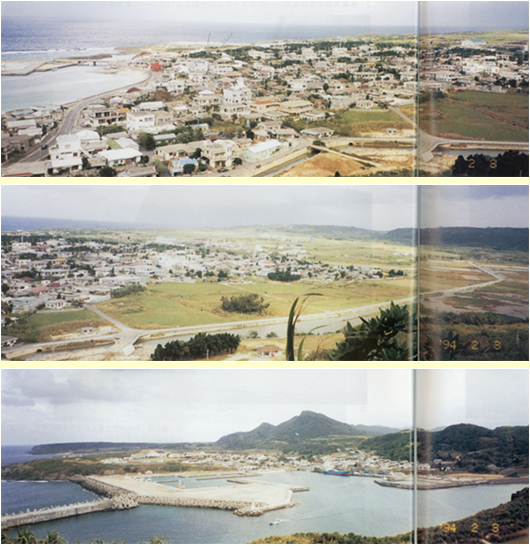- Home
- > Study Groups and their Achievements
- > Group 3: Overview of Arrangement and Systematization of the Environment and Scenery
Study Groups and Achieveme
Arrangement and Systematization of the Environment and Scenery
Group 3: Overview of Arrangement and Systematization of the Environment and Scenery
Group 3 initially started its research activities with its three subgroups focusing on the themes of “Research for Scenery in History,” “Research on Environmental Recognition and its Changes,” and “Interpretation of Traces of Human Activity and Natural Disasters Inscribed into the Environment.” During the first three years, the three subgroups conducted their research with the aim of constructing organic links among themselves. In fiscal year 2006, the subgroups were reorganized to create a system for research studies that allowed new members from other subgroups to join in. Under this new system, the pursuit of mutual relevance receded as preference was given to the pursuit of research themes unique to each subgroup and each task was able to produce distinctive results.
In the booklet “Towards the Arrangement and Systematization of the Environment and Scenery” published in 2004, issues on the environment and scenery were approached from the diverse fields of folklore, geography and history, and we started working on the prerequisite tasks for building a mutual and common understanding. The subgroups were later reorganized to deepen the level of understanding in the respective fields, and were separated into Task 1 “Research for Scenery in History,” Task 2 “Research on Environmental Recognition and its Changes,” and Task 3 “Interpretation of Traces of Human Activity and Natural Disasters Inscribed into the Environment,” which explicated research and studies based on the respective tasks. For Task 1, examination and analysis were conducted mainly by specifying the places where the Shibusawa Films (owned by the Institute for the Study of Japanese Folk Culture) were shot. For Task 2, specific areas in western and eastern Japan were chosen as research targets, but the research was suspended due to the said target areas suffering from natural disasters, preventing the initial plan from being executed. During the latter two years, the group deepened its level of understanding on the transition in environmental recognition based on results of archaeological excavations of the Kamakura period. For Task 3, research targets were divided into overseas shrine remains, concessions, and postcards of the Great Kanto Earthquake, while research and analysis were conducted on each of the research materials. Findings established, demonstrated and reaffirmed that nonwritten cultural materials as a manifestation of human culture do not exist in contrast to written cultural materials, but rather complement written cultural materials within culture as a whole. In addition, it was decided that the photographs used to pursue each task be gathered as a database and be disclosed to the public, as images of scenery depicted in many photographs have already been lost.

Tasks for Group 3
- Task 1: Timeline Research of Scenery
- Task 2: Research of Environmental Recognition and Its Changes
- Task 3: Interpretation of the Traces of Human Activity and Natural Disasters Inscribed into the Environment
Researchers (As of 31 March, 2008)
- Program Representative
- KATSUKI Yoichiro
- COE Faculty Member
- HAMADA Hiroaki
- Joint Researchers
- JUNG Mee Ae, TOMII Masanori, HACHIKUBO Koshi
- Research Collaborators
- LI Sun Ae , KOHSAKA Yoshitaka
- Program Representative
- KATSUKI Yoichiro
- Joint Researcher
- HACHIKUBO Koshi
- Research Collaborator
- TAGUCHI Hiromi
- Program Representatives
- KITAHARA Itoko, OSATO Hiroaki, SON An Suk
- Joint Researchers
- KANEKO Ryuichi, TSUDA Yoshiki, TOMII Masanori, MIKI Seiichiro
- Research Collaborators
- UEDA Sumihiro, NISHIDA Yukio, HORIUCHI Hiroaki
